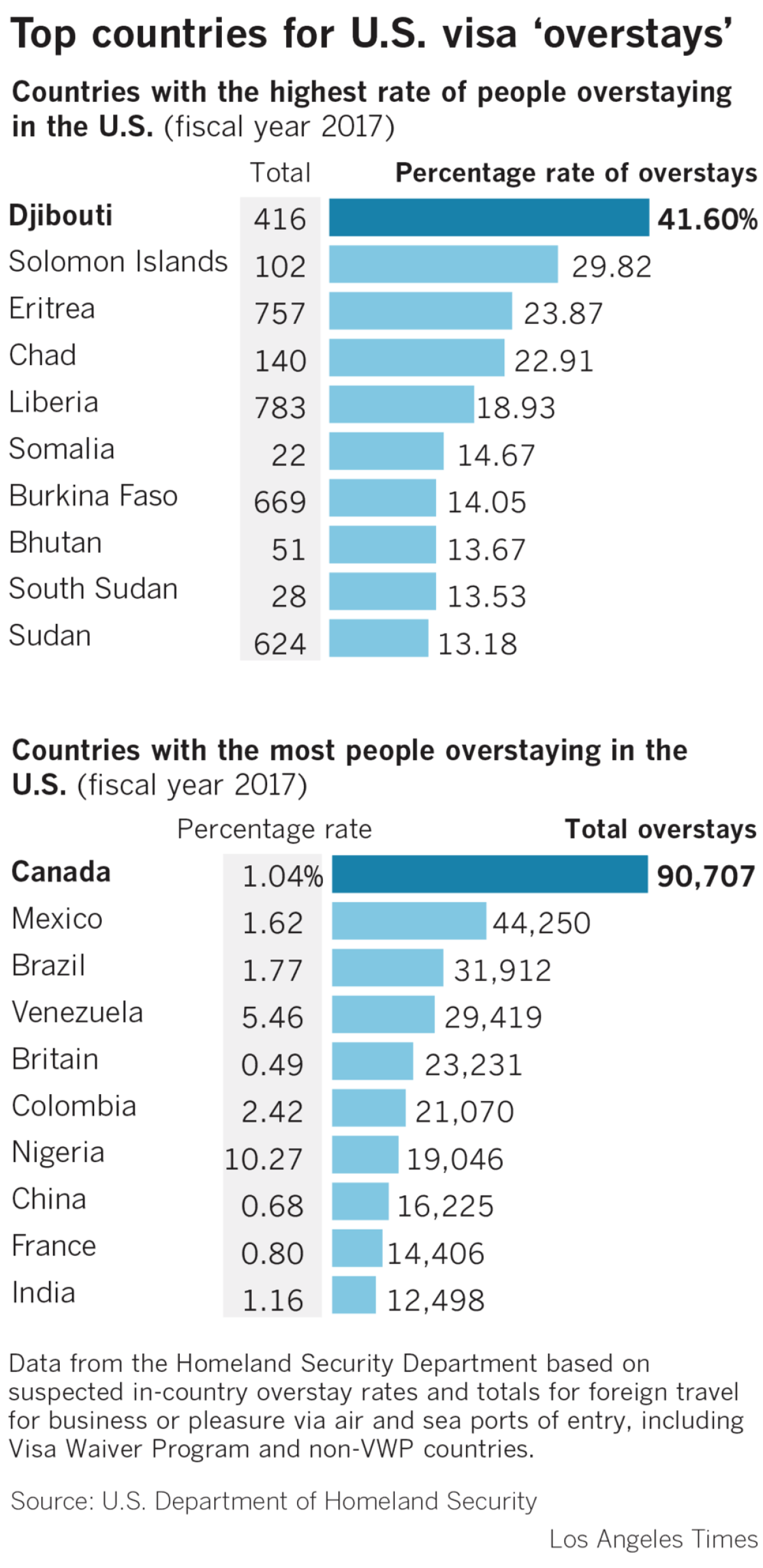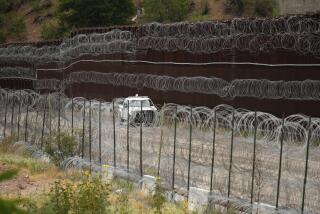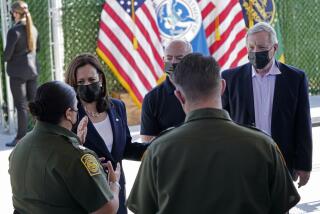In a shift, Trump targets foreign travelers who overstay their U.S. visas
Reporting from Washington — The White House says it plans to crack down on the hundreds of thousands of foreign visitors who overstay their U.S. visas, a vast challenge that has largely escaped notice as the Trump administration has focused chiefly on blocking migrants on the southern border.
Experts say so-called overstays by students, au pairs, tourists and others have far outpaced unauthorized border crossings in recent years and form a major portion of the estimated 10.7 million people in the country without permission.
President Trump signed a memorandum late Monday threatening to ultimately suspend travel from countries with high rates of overstays, and possibly require foreign travelers to post “admission bonds” that would be repaid once they leave the country.
Visitors “who abuse the visa process and decline to abide by the terms and conditions of their visas, including their visa departure dates, undermine the integrity of our immigration system and harm the national interest,” Trump wrote.
He offered few immediate concrete steps beyond directing the secretaries of Homeland Security and State to identify ways to combat non-immigrant visa overstays within 120 days.
Nonetheless, the memo serves as a rare acknowledgement by the administration that many undocumented people in the country entered legally by ship or plane. Trump has chiefly focused his ire on Central Americans who crossed the border between ports of entry or entered to seek asylum.

The largest number of visa overstays are from Canada and Mexico, but 20 countries have overstay rates ranging from 10% to 41%, according to the White House.
“This has been an issue people have been trying to deal with for quite a long time,” said Theresa Cardinal Brown, director of immigration and cross-border policy at the Bipartisan Policy Center, a Washington-based think tank. “The majority of new additions are actually overstayers, not people crossing the border illegally.”
Sarah Pierce, a policy analyst at the nonpartisan Migration Policy Institute, called it “kind of surprising that an administration so active on immigration has taken this long” to focus on overstays.
“The memo itself doesn’t do anything, but it does lay the groundwork for what potentially could be really strict enforcement around overstays,” she added.
The latest Homeland Security Department data show that about 702,000 visitors who entered the country by sea or air in fiscal 2017 remained longer than allowed, according to a Government Accountability Office review. By comparison, U.S. authorities apprehended 304,000 migrants at the southern border that year.
The Homeland Security data showed a handful of African countries had among the highest proportion of visa overstays, especially Eritrea, Chad, Liberia and Somalia.
The Republic of Djibouti, a tiny but strategically vital country on the Horn of Africa, had a suspected overstay rate of 41.6 %, the highest proportion of any nation. Djibouti has a population of about 1 million people.
Nigeria, which has about 200 million people, had an overstay rate of 10.3%, but 19,046 overstays, far more than Djibouti.
Last year, Trump made disparaging remarks about African countries, expressing a preference for immigration from northern European countries like Norway.
Brown, who worked for both the George W. Bush and Barack Obama administrations, said it made sense for Trump to focus on countries with a high proportion of overstays but a relatively small number in total.
“If we were to start talking about sanctions and visa denials to a country like Canada or Mexico, there would be a whole lot more national interests to consider than some of these countries in Africa,” she said. “It’d be harder to do.”
Trump’s memo says if the countries with high overstay rates don’t reduce them, the United States may toughen visa requirements or shorten visits.
Under current policy, countries with overstay rates of at least 2% are required to initiate public awareness campaigns warning against staying beyond permission, according to the White House.
Even as it focused on curbing overstays, the White House said the goal was to alleviate the “significant strain” overstays put on the Justice and Homeland Security departments, saying their resources “are currently needed to address the national emergency on our southern border.”
More than 98% of foreign travelers leave the United States on time or abide by the terms of their visas, according to official figures. U.S. immigration law imposes up to a decade-long ban on visitors who overstay their visas by more than six months.
U.S. consular officers can deny visas to applicants seen as likely to exceed their permitted stay, and the State Department has undertaken steps to punish countries deemed uncooperative with U.S. immigration enforcement efforts.
Multiple Homeland Security agencies are charged with overseeing enforcement of immigration law, including overstays.
Customs and Border Protection inspects all people seeking entry or applying for admission to the United States. It takes travelers’ biographic and biometric data in order to help identify suspected overstays.
Immigration and Customs Enforcement enforces immigration inside the country, and is primarily responsible for finding and removing those who overstay. Citizenship and Immigration Services processes documentation for non-immigrants and travelers, including visa extensions or changes to immigration status.
Still, with about 52 million visitors legally entering the United States each year, federal authorities have long faced challenges tracking overstays. Customs and Border Protection says its overstay data have been reliable only since 2015.
With near-record numbers of asylum seekers and primarily Central American families arriving at the southern border in recent months, Trump has vowed to take a tougher approach to stop the inflow. He recently ousted several top Homeland Security officials, including Secretary Kirstjen Nielsen and his own nominee to lead ICE.
“Looking at everything this administration has done, it has leaned heavily on enforcing the immigration laws as they exist,” Brown said. “Overstays are a part of immigration law that has not been significantly enforced.”
Pierce said it was part of a pattern in which the administration, blocked both on the border and on interior enforcement, begins to look elsewhere for any action it can take on immigration.
“I think the administration is really actively searching for other ways they can be effective,” she said, “or at least be seen as trying to be effective, on immigration.”
Twitter: @mollymotoole
More to Read
Get the L.A. Times Politics newsletter
Deeply reported insights into legislation, politics and policy from Sacramento, Washington and beyond. In your inbox three times per week.
You may occasionally receive promotional content from the Los Angeles Times.











